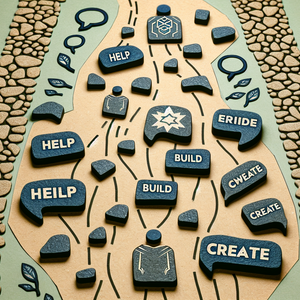The First Week Window

To harness the full potential of "The First Week Window," teachers must focus on creating a welcoming and inclusive classroom atmosphere. This involves thoughtful physical arrangements, such as seating plans that promote interaction and collaboration, as well as setting a tone of openness and respect. Teachers can kick off this process by sharing a bit about themselves, which helps break the ice and encourages students to open up. Engaging activities like "Getting to Know You" games or collaborative art projects serve as excellent icebreakers, allowing students to express themselves in a relaxed manner. This helps establish a sense of community and trust, which is fundamental for effective learning.
Observing and Listening
In this initial week, teachers act as keen observers. They pay close attention to how students interact with one another and with the teacher, looking for signs of social dynamics and individual personalities. Teachers listen to the language students use, their tone of voice, and observe nonverbal cues such as body language and facial expressions. Such observations enable teachers to identify students who might be shy, anxious, or reluctant to participate, as well as those who are eager and confident. This aligns with the insight that teachers can often predict which students will struggle just by observing their body language and engagement during this crucial period.
Strategies for Gathering Insights
1. **One-on-One Interactions**: Short, informal one-on-one conversations can be incredibly revealing about students' interests, backgrounds, and concerns. These can occur during breaks or as students enter or leave the classroom, offering a personalized touch that makes students feel valued and understood. 2. **Interest Surveys and Questionnaires**: Distributing simple surveys or questionnaires allows students to express their interests, learning preferences, and any apprehensions they might have. This data helps teachers tailor their teaching methods to better suit the class, fostering a more personalized learning experience. 3. **Group Activities**: Collaborative group activities not only help build a sense of community but also allow teachers to observe group dynamics. These activities help identify leaders, followers, and those who might struggle with social interactions, providing insights into the classroom's social structure. 4. **Creative Expressions**: Encouraging students to express themselves through art, writing, or other creative outlets offers insights into their emotional states and personal experiences. This is particularly beneficial for younger students or those who may struggle with verbal communication, providing an alternative means of expression.
Adapting Teaching Strategies
Once teachers have gathered insights, the next step is to adapt their teaching strategies to meet the diverse needs of their students. For instance, students who show signs of anxiety might benefit from additional encouragement and reassurance, while those who are more advanced may need extra challenges to stay engaged. Teachers can also use this information to group students strategically, pairing those who might benefit from peer support or providing opportunities for peer mentoring. This individualized approach ensures that each student receives the support they need to thrive academically and socially.
The first week of school is more than just an introduction to a new academic year; it is a window into understanding the unique needs and potential challenges of each student. By creating a welcoming environment and employing strategic observation and interaction techniques, teachers can gather vital insights that will inform their teaching strategies throughout the year. This proactive approach not only helps in identifying students who may need additional support but also fosters a supportive and inclusive classroom atmosphere where all students have the opportunity to thrive. Embracing the potential of "The First Week Window" ensures that the academic year begins on a strong, informed, and compassionate note.
Educational Psychologist
schools, educational institutions, and private practices
Responsibilities
Conduct assessments to understand students' learning and emotional needs.
Collaborate with teachers to develop strategies for students requiring additional support.
Implement interventions to improve student well-being and academic performance.
Qualifications
Degree in psychology and certification in educational psychology.
Curriculum Developer
educational publishers, school districts, and government agencies
Responsibilities
Design and evaluate educational programs and materials that accommodate diverse learning styles.
Incorporate insights from teachers and students to refine curriculum content.
Ensure alignment with educational standards and learning goals.
Qualifications
Expertise in pedagogy and experience in educational settings.
School Counselor
schools, colleges, and private counseling centers
Responsibilities
Provide guidance and support to students dealing with academic, social, or personal challenges.
Develop and implement programs to promote student well-being and success.
Work closely with teachers and parents to address student needs.
Qualifications
Degree in counseling and appropriate licensure/certification.
Special Education Coordinator
school districts and educational institutions
Responsibilities
Oversee special education programs, ensuring compliance with legal and educational standards.
Train and support teachers in implementing individualized education plans (IEPs).
Advocate for students with special needs to ensure they receive appropriate resources and support.
Qualifications
Experience in special education and knowledge of disability laws.
Instructional Coach
school districts, educational consulting firms, and training organizations
Responsibilities
Mentor and support teachers in adopting effective teaching strategies and technologies.
Analyze classroom performance data to identify areas for improvement.
Facilitate professional development workshops focused on innovative educational practices.
Qualifications
Strong communication abilities and a background in education or teacher training.


